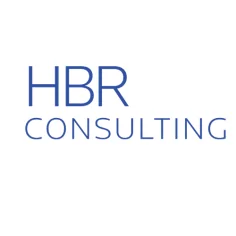A clear vendor governance strategy can help law firms weather an economic downturn
As we face the prospect of an economic downturn, firms are looking at ways to best position themselves. A centralized, clear vendor governance strategy that aligns with the firm’s strategic direction can aid in responding to economic turbulence. Vendor governance can help a firm readily identify operational costs for reduction, minimizing the impact on profits, and sustain those cost savings during an economic downturn.
Ideally, law firms have plans for an economic downturn in place—but if you do not, you are in good company. In HBR’s 2019 procurement survey, conducted in association with its annual Procurement Roundtable last fall, nearly half of respondents—46 percent—said that they were somewhat prepared, while 31 percent were barely prepared or not prepared at all. Many had assembled an initial framework for thinking about a recession; however, few had acted on those ideas or created a concrete plan of action.
Now is clearly the time to seriously focus on vendor governance. Determining what you need (mandatory) and what you can afford to cut (nice to have), and starting to introduce flexibility into your contracts, are urgent needs. A structured expense management program can achieve ongoing cost savings to help the firm weather economic volatility.
Map Expenses to Firm Needs and Priorities
A critical first step is to gain an understanding of the firm’s spending and contractual obligations, and to map those against the firm’s current needs and priorities.
Assess expenses and contractual obligations. Evaluate your firm’s spending and contractual obligations. Begin by bucketing expenses into fixed and variable categories that can then be mapped against the firm’s needs and priorities. Review the firm’s contracts for an understanding of contractual obligations and key terms and conditions, including those that offer any flexibility to cut back or terminate during lean times.
Align with firm priorities. Next, compare how the firm’s current expenses and obligations match up with its needs and priorities. It is critical that the vendor governance strategy be aligned with the firm’s overall priorities as outlined by firm leadership What are your firm’s “must haves” to support these priorities, versus what might be nice? What strategic projects, such as critical upgrades, must be protected regardless of a downturn? Taking a pragmatic approach to the firm’s requirements can yield significant cost savings.
Develop an Expense Management Program
Firms must go beyond immediate, one-time adjustments to weather a longer period of economic downturn. A centralized expense management program based on strong vendor governance principles can yield recurring cost savings. Elements of a strong expense management program include contractual flexibility, demand management, controllership and, of course, centralization.
Contractual flexibility. Building contractual flexibility is critical to effectively managing costs in times of economic volatility. As you enter new agreements, the goal is to provide the firm with the flexibility to realign its service needs to meet current business realities by changing the type or level of services or, if appropriate, canceling agreements altogether. Clauses such as those related to business downturn and termination for convenience can help add flexibility, as can careful negotiation of payment terms and the contract’s term length.
Demand management. Evaluate opportunities to enhance efficiencies and cost effectiveness. Examples include consolidating suppliers (e.g., identifying preferred vendors) to leverage greater buying power; changing to different, less expensive products or services; or adjusting levels of service (e.g., changing number of licenses or level of tech support). Most law firms have a continuum of expenses, ranging from essential products and services such as bar dues and insurance, whose costs are relatively fixed; to important business support areas such as IT and telecon where there may be some limited room for demand management; , to non-essential items such as parties, artwork, etc., where the demand management opportunities are high.
Controllership. Incorporate policies and procedures, proactive budget tracking and financial hygiene to actively control costs. Examples include adjusting payment timing from daily or ongoing to a fixed cycle; restricting or adding levels of approval for spending over defined levels; and policies to ensure compliance with the expense management program.
Centralization. Centralizing vendor governance activities and operations as much as possible will ensure success of all these endeavors. Not only will it reduce the amount of internal effort required for expense management, it will facilitate contract consistency, demand management, and enforcement of expense management policies.
Planning is not just about cutting costs; it is about ensuring that the firm can rapidly rebalance to maintain the best fit with its strategy in a changing market. A strong vendor governance program will help the firm respond to immediate needs, align its supply chain with its priorities and exercise ongoing expense management in order to adapt to economic volatility.



